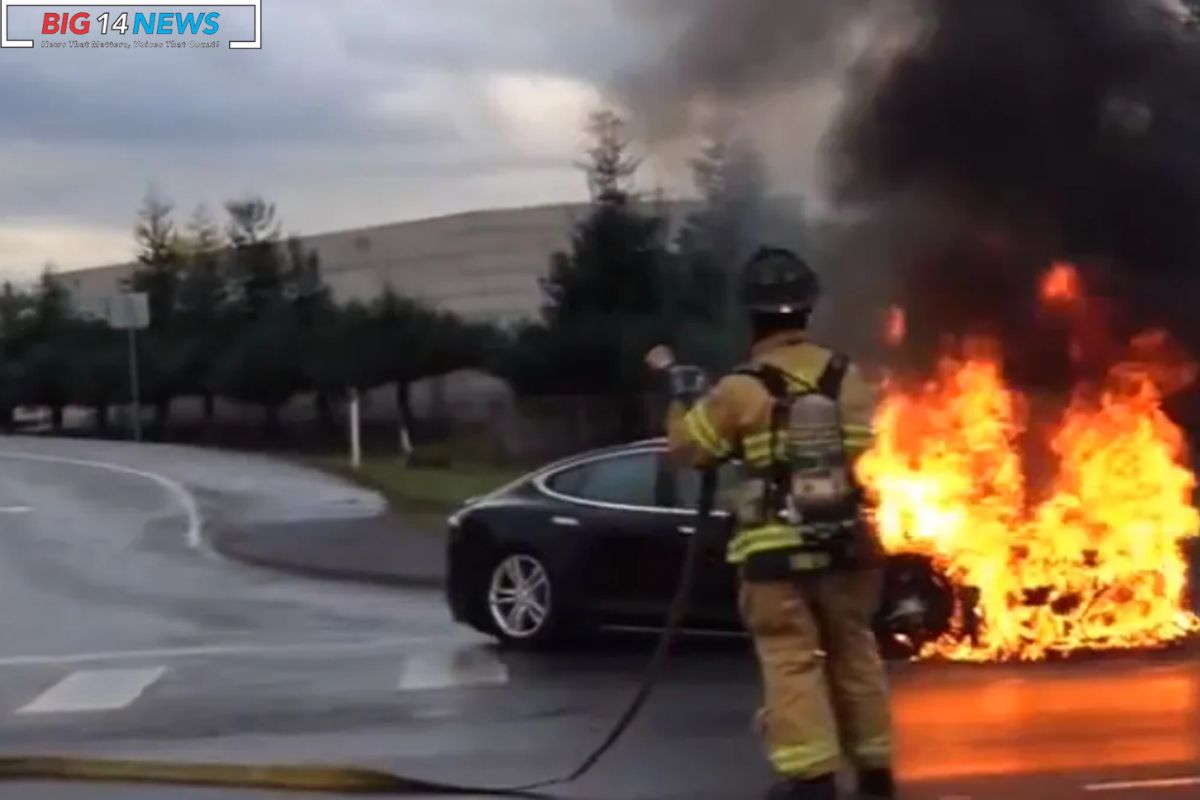Burning Tesla Requires 36000 Gallons of Water: In a new and unique challenge for firefighters, a burning Tesla vehicle ignited a blaze that required an astonishing 36,000 gallons of water to extinguish. This incident has sparked concerns among fire departments regarding the safety protocols and resources needed to combat fires involving electric vehicles.
With the growing popularity of Tesla and other electric cars, it is crucial for firefighters to adapt their tactics and equipment to effectively respond to these emerging risks.
Key Takeaways
- Electric vehicle fires pose unique risks and challenges that require specialized training and resources for firefighters.
- High-voltage batteries in electric vehicles can reignite even after being extinguished, necessitating complete de-energization of the vehicle.
- The intense heat generated by electric vehicle fires can result in structural damage, making firefighting more challenging.
- Specialized training and equipment are necessary to safely handle and extinguish electric vehicle fires.
Incident Overview
The incident involving the burning Tesla in Autauga County on Christmas night posed significant challenges for firefighters due to the unique risks presented by electric vehicle fires. Electric vehicle fires require different strategies and resources compared to traditional vehicle fires.
The high-voltage batteries in electric vehicles can reignite even after being extinguished, making it crucial for firefighters to completely de-energize the vehicle. Moreover, the intense heat generated by these fires can result in structural damage, making it difficult for firefighters to approach and extinguish the flames.
In the case of the burning Tesla, it took more than 36,000 gallons of water to finally put out the fire. The incident emphasizes the need for specialized training and equipment to handle electric vehicle fires effectively and underscores the importance of raising awareness about these unique risks among firefighters.

ALSO READ: Toney Firefighters Tackle Raging Blaze Near Hazel Green: 30 Acres Scorched, Barn Lost
Firefighters’ Challenge
Firefighters face a significant challenge when dealing with electric vehicle fires due to the unique risks and specialized strategies required to effectively extinguish and prevent reignition.
Unlike traditional gasoline-powered vehicles, electric vehicles contain high-voltage batteries that pose a potential electrocution hazard to firefighters. Additionally, these batteries can reignite hours or even days after being extinguished, requiring firefighters to remain vigilant long after the initial fire is put out.
To effectively combat electric vehicle fires, firefighters must undergo specialized training to understand the intricacies of these vehicles and the potential dangers they present. This includes learning how to safely disconnect the battery and use specific firefighting techniques that minimize the risk of reignition.
As electric vehicles become more prevalent on the roads, it is crucial that firefighters adapt their strategies to meet this new challenge and ensure the safety of both themselves and the public.
Incident Details
During the recent incident involving a burning Tesla Model Y, Pine Level firefighters in Autauga County were faced with the daunting task of extinguishing the fire. The intensity of the blaze led to the closure of the relevant portion of Interstate 65, highlighting the severity of the situation.
To combat the fire, the firefighters deployed two hose lines, but it took over an hour to bring the flames under control. The sheer amount of water required was staggering, with a staggering 36,000 gallons used to fully extinguish the burning Tesla.
This incident highlights the unique challenges that electric vehicle fires can present to firefighters, requiring specialized training and equipment to effectively manage and extinguish such incidents.

Response and Result
To effectively manage and extinguish electric vehicle fires, firefighters must undergo specialized training and utilize specific equipment, as evidenced by the recent incident involving a burning Tesla Model Y in Autauga County.
The response to this incident involved a coordinated effort from various fire departments, emergency services, and law enforcement agencies. Three engines, two rescues, one ambulance, four water tankers, one squad, one brush truck, and three command vehicles were deployed to the scene. This large-scale response was necessary due to the unique challenges posed by electric vehicle fires, including the need for a significant amount of water.
In this case, it took approximately 36,000 gallons of water to extinguish the burning Tesla. This incident highlights the importance of ongoing training and preparedness for firefighters to effectively handle such situations and protect public safety.
Driver’s Condition and Arrest
The driver’s condition and arrest were carefully assessed and managed by law enforcement personnel at the scene of the incident.
Following the driver’s escape unharmed from the burning Tesla, the Alabama Law Enforcement Agency (ALEA) promptly took the individual into custody.
In handling the situation, the law enforcement personnel demonstrated their expertise and professionalism. They approached the driver with caution, evaluating their physical and mental state to ensure the safety of all involved.
Once satisfied with the assessment, the officers proceeded to arrest the driver, adhering to established protocols and procedures.
This swift and efficient handling of the driver’s condition and arrest reflects the competence and preparedness of the law enforcement personnel on the scene.

Conclusion Of Burning Tesla Requires 36000 Gallons of Water
the incident involving a burning Tesla presented a new challenge for firefighters due to the large amount of water required to extinguish the fire.
Despite the efforts of the responders, the vehicle was completely destroyed.
The driver’s condition is unknown at this time, and an arrest was made in connection with the incident.
Also Read: Alabama Trans Care Ban for Minors Litigation Moves Ahead US DOJ Request for Halt
Our Reader’s Queries
How many gallons of water does it take to put out a burning Tesla?
“A typical car fire can usually be extinguished with 500 to 1,000 gallons of water,” explained Austin Fire Department Division Chief Thayer Smith. “However, for Teslas, you might need as much as 30,000 to 40,000 gallons of water, or possibly even more, to put out the battery pack once it catches fire.” According to The Independent.
Did it take 4500 gallons to put out Tesla fire?
After numerous efforts to extinguish the fire, crews resorted to submerging the vehicle which had previously been in an accident three weeks prior in a shallow pit filled with water to prevent the battery compartment from catching fire again. Approximately 4,500 gallons of water were utilized by the crews to douse the flames.
What electric car fire submerged in water?
The Tesla Model X owner at Polk Street Boat Ramp in Hollywood, Florida accidentally drove their electric vehicle into the salty inter-coastal waters. The conductive water caused a short circuit, as reported by Hollywood Professional Firefighters who responded to the incident.
How do you put out a lithium battery fire on a Tesla?
Tiny lithium batteries have minimal lithium content, allowing them to be extinguished with water. For larger lithium-ion battery fires, utilize a foam extinguisher with CO2, powder graphite, ABC dry chemical, or sodium carbonate. When dealing with battery pack fires, it’s important to note that each cell may ignite at different times.

